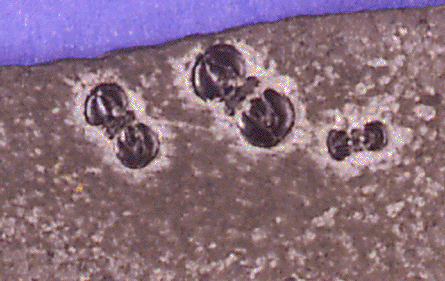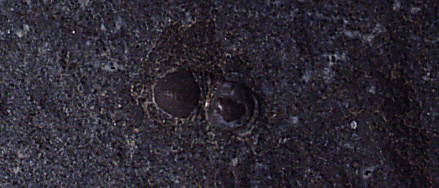Introduction to the Agnostida


Agnostid trilobites were rather unusual trilobites: it is thought by some paleontologists that they may have been planktonic. They are small, often lack eyes, and have a pygidium the same size as the cephalon; it can be difficult to tell which end of an agnostid is the front! Agnostids have only two or three segments between the cephalon and pygidium.
Agnostids appeared in the Lower Cambrian and are common in some Cambrian rocks; they became rare in the Ordovician and went extinct at the end of the Ordovician. They are useful for biostratigraphic correlation of Cambrian rocks.
There are two subgroups of agnostids. The Agnostina is represented at the top of the page, by specimens probably in the genus Ptychagnostus, from the Middle Cambrian of Utah. These trilobites are only about 8 mm (about 1/3 inch) long. Members of the Agnostina have only two segments between the cephalon and pygidium, and never have cephalic sutures. Below is a picture of Pagetiellus, from the Lower Cambrian of the Lena River region of Siberia, a representative of the second subgroup of agnostids, the Eodiscina. These agnostids may have two or three body segments, and some have small eyes and proparian sutures.



